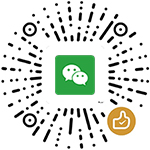
You Can Kill an Idea, but You Can't Kill an Opportunity:How to Discover New Sources of Growth for Your Organization
Author: Pam Henderson
Publisher: John Wiley & Sons Inc
Edition: 1st edition ()
Publication Date: 2013-10-28
Language: English
Paperback: 263 pages
ISBN-10: 111880838X
ISBN-13: 9781118808382
Book Description
Ideas alone are failing us! They promise growth, but too often lead to products and services that don't deliver. In many companies it can take up to 3,000 ideas to lead to 100 projects, resulting in only 2 launches, producing on average one product that breaks even and of these products only 20% tu a profit. Defining the opportunity first, leads to big ideas that win and increases the odds for success.
Pam Henderson, former faculty at Caegie Mellon University and author of You Can Kill an Idea, but You Can’t Kill An Opportunity! shows how to apply Opportunity Thinking™ in your own organization to increase speed to market for products, eliminate idea bottlenecks, get crisp on demand space, value open innovation and increase creativity ROI.
Opportunity Thinking™, a new approach to innovation developed by author Pam Henderson, has transformed the way companies and organizations, from Fortune 500 to non-profits, find big ideas that win and create sustainable growth.
Opportunity Thinking™ is a creative jouey that taps six sources - market forces, business models, technology, organizations, environments, and design to discover big places to play. Not your average business book, Henderson’s clever narrative, bold visuals and countless stories of companies and brands will inspire you to think in new ways and stretch your mind to consider the possibilities.
From the Back Cover
Opportunity Thinking unleashes big growth
Growth of every kind, for every person
We all have the potential to grow—our organizations, careers, and even the good we can create. Vision, insight and creativity are not linked to a job title. They are inherent in all of us, waiting to be tapped and brought to life for extraordinary success.
Tools for Opportunity Thinking
Opportunity Thinking empowers us to see potential in new places—across markets, technologies, business models, brands and design. Your entire organization can become Opportunity Thinkers!
Jouey to bigger ideas
Ideas alone are failing us! They promise growth, but too often lead to products and services that don't deliver. Understanding opportunity inspires and generates big ideas that win.
 Wow! eBook
Wow! eBook

